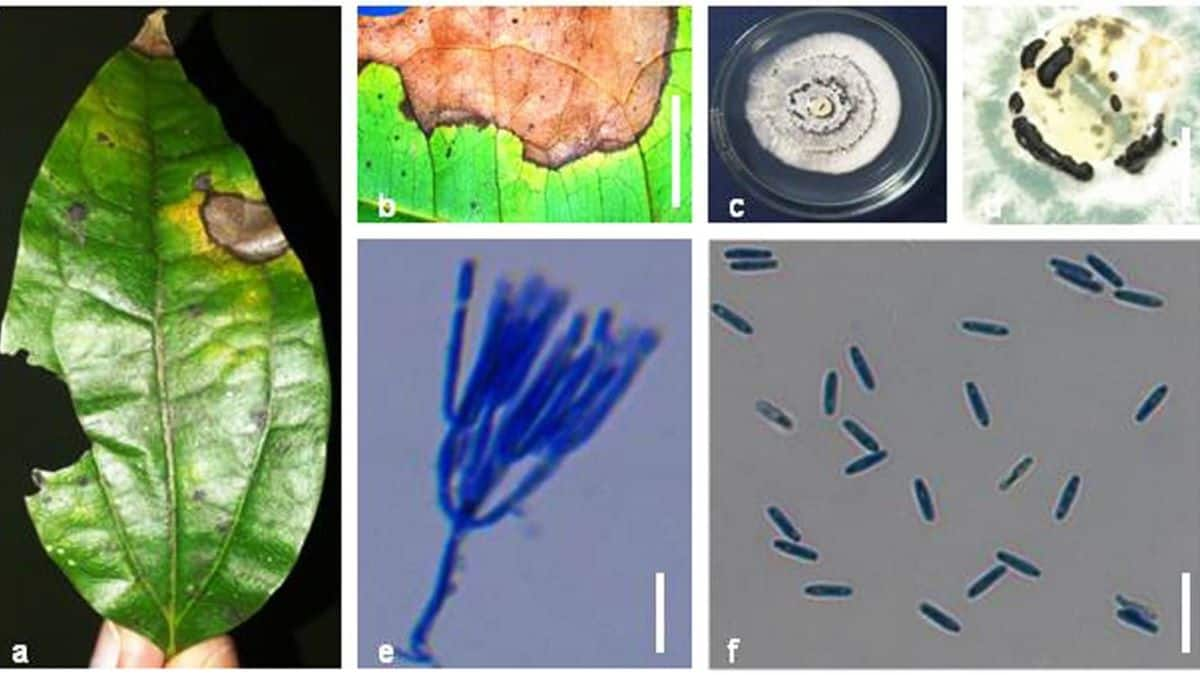KFRI, BHU scientists find a new fungus harming vulnerable medicinal plant
Team Careers360 | October 7, 2025 | 01:11 PM IST | 2 mins read
The fungus causes death of plant tissues in Kanjiram, which is used in traditional medicine to treat a range of conditions, said the BHU, KFRI scholars

Researchers from the Kerala Forest Research Institute (KFRI), Thrissur and Banaras Hindu University (BHU), Varanasi have discovered a new species of fungus harming Kanjiram, a medicinal plant found in the Western Ghats, especially in Kerala.
Paramyrothecium strychni, a phytopathogenic fungus associated with leaf spots and blights disease, a condition resulting in the death of plant tissues in Kanjiram. The identification of the species will help in tracking the disease in the plant and formulating preventive strategies.
Kanjiram, scientifically known as Strychnos dalzellii, is endemic to Western Ghats and is categorised as a ‘vulnerable’ species by the International Union for Conservation of Nature Red List of Threatened Species, commonly called the IUCN Red List. The plant, while possessing toxicity, is valued in traditional medicine systems for its alkaloids with analgesic, anti-inflammatory and antimicrobial characteristics. It is used to treat various conditions, including fever, digestive disorders, rheumatism and nervous ailments.
The research has been published in Fungal Diversity journal by Shambhu Kumar, principal scientist and head, forest pathology department of KFRI and Raghvendra Singh, an assistant professor at BHU’s botany department.
“This new species has been discovered and established on the basis of morpho-cultural and multigene molecular phylogenetic evidences. According to IndexFungorum, a total of 25 species of Paramyrothecium are recognised worldwide, and most of them are reported as plant pathogens,” the researchers said in a statement.
Kerala’s fungal diversity
The scientists said that the discovery highlights Kerala’s fungal biodiversity. “The discovery of Paramyrothecium strychni as a pathogen on Strychnos dalzellii highlights the need for ongoing surveillance in Kerala’s biodiverse regions to detect new fungal threats. This precise identification aids in tracking disease spread and in formulating targeted management strategies to reduce the impact on health of C. strychni plants, supporting conservation and sustainability,” said Shambhu Kumar.
He adds that the fungus can infect all plant leaves within a short period of time if the climatic condition is favourable. The diseases can be treated by pruning and removing of infected leaves in the early stage of infection.
“Some biological preventive solutions are available in the market which can be used for control of this disease. In severe cases, fungicides may be very effective for the control of Paramyrothecium leaf spots and blights,” said the researcher.
However, the researchers also suggested that the otherwise damaging fungus may prove to be useful in some instances. They wrote, “It has been previously reported that some species of Paramyrothecium produce secondary metabolites with bio-herbicidal potentials. Hence, further research is needs to be taken on host ranges, epidemiology, host-pathogen interactions, integrated management and bio-potential of this pathogen.”
Follow us for the latest education news on colleges and universities, admission, courses, exams, research, education policies, study abroad and more..
To get in touch, write to us at news@careers360.com.